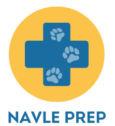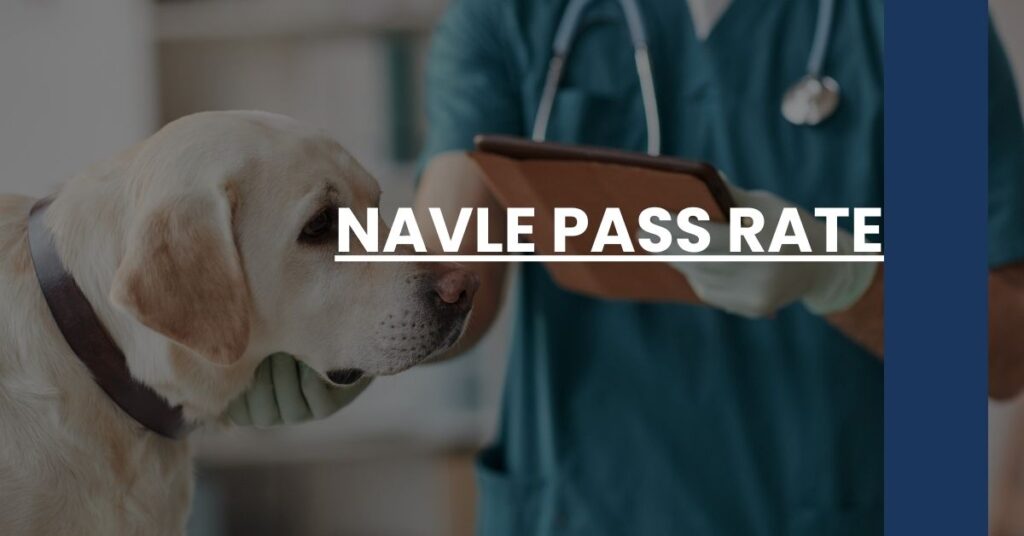The North American Veterinary Licensing Examination (NAVLE) pass rate is a pivotal measure for aspiring veterinarians, with first-time test-takers typically achieving a success rate between 75% and 85%. This figure reflects the quality of veterinary education and candidate preparation, echoing their readiness to practice.
In this narrative, you’ll uncover:
- The implications of NAVLE pass rates for the veterinary profession.
- Benchmark data for evaluating veterinary schools.
- Strategies for enhancing your chances of passing the NAVLE.
Remember, while these insights offer a glimpse into the veterinary licensing landscape, your journey towards conquering the NAVLE is unique. Keep reading to equip yourself with valuable knowledge to navigate this significant milestone.
Understanding the NAVLE Pass Rate
As you embark on the journey to become a licensed veterinarian, passing the North American Veterinary Licensing Examination (NAVLE) stands as a significant milestone. While navigating through study materials and clinical rotations, you might wonder about the pass rates and what they could mean for your future. Let’s dive into the details and shed some light on what to expect when it comes to the NAVLE pass rate.
The Role of the NAVLE in Veterinary Licensing
Before we discuss rates, it’s crucial to understand the role of the NAVLE itself. As the gold standard for veterinary licensing in North America, the NAVLE evaluates your knowledge and skills to ensure you are fit to practice. It’s a comprehensive assessment that covers an array of veterinary medicine areas. The 300 scored questions span across species and situations, from domestic animals to exotics and from clinical scenarios to public health issues.
Historical NAVLE Pass Rates
Historically, pass rates for the NAVLE have been quite promising for first-time test-takers. Most statistics show that between 75% and 85% of candidates clear the hurdle on their first attempt. This reflects positively on the candidates’ preparedness and the effectiveness of veterinary schooling programs. You might be curious to see specific historical trends and how they could influence your own preparation strategies.
Navigating NAVLE Preparation
Knowing the pass rate is one thing, but effectively preparing for the NAVLE is where your focus should be. Preparation is key to joining the ranks of successful candidates.
Key Factors Influencing Success
Several factors come into play when preparing for the NAVLE:
- Quality of Education: The foundation of your veterinary knowledge is laid during your years in vet school. Look for institutions known for their high NAVLE pass rates, as it usually indicates a robust curriculum designed to prepare you well for the exam.
- Study Habits: How and what you study can mean the difference between passing and falling short. Develop a structured study plan that’s comprehensive and aligned with the NAVLE’s subject matter.
- Stress Management: The NAVLE can be a high-pressure exam, and your ability to manage stress could impact your performance. Engage in relaxation techniques like meditation or exercise to keep anxiety at bay.
- Clinical Experience: Real-world exposure to veterinary medicine enhances your ability to answer the practical and situational questions you’ll face on the NAVLE. Prioritize gaining a diverse range of clinical experiences throughout your education.
For deeper insights into these success factors, consider examining resources such as Saint George’s University’s breakdown of what goes into achieving desirable pass rates.
Educational Perspectives on Pass Rates
A notable NAVLE pass rate is often seen as a testament to the quality of a veterinary program. Institutions commonly use these statistics to benchmark their success in educating future veterinarians.
Benchmarking Veterinary Schools
When selecting a veterinary school, compare their NAVLE pass rates. Higher numbers typically suggest a conducive learning environment and effective teaching strategies. Reviewing the pass rates provided by the National Board of Veterinary Medical Examiners (NBVME) can be an enlightening step in your decision-making process.
Improving Your Odds of Passing the NAVLE
Enhancing your odds involves more than just hitting the books. Here are some proactive strategies:
- Understand the Format: Familiarize yourself with the NAVLE’s structure and types of questions you’ll encounter.
- Use Study Guides Wisely: Choose resources that are respected and align well with the NAVLE’s blueprint.
- Practice Exams: Taking multiple practice exams can help you get comfortable with the timing and pressure of the real thing.
- Seek Guidance: Don’t hesitate to reach out to mentors, alumni, or faculty for advice and insight into tackling the NAVLE effectively.
Incorporate these strategies into your study routine and you’ll set yourself on a path towards success.
Competency-Based Education and Its Impact
Delving deeper into your preparation strategies, a highlight that can significantly affect your NAVLE pass rate is competency-based education. This approach has been gaining traction in veterinary schools and it hinges on ensuring that you, as a student, master specific competencies before graduation.
Embracing Competency-Based Learning
Competency-based learning is tailored to produce veterinarians who are not only knowledgeable but also skilled in applying that knowledge in practice. This education model encourages an environment where you can learn at your own pace, ensuring you thoroughly understand each topic before moving on. By focusing on outcomes and hands-on skills, this method aims to bolster the NAVLE pass rate, solidifying your readiness for real-world challenges. For an in-depth exploration of competency-based models, you may consider studying the trend’s influence on veterinary education at resources such as the Association of American Veterinary Medical Colleges.
Tailoring Your Studies to Competencies
In your studies, prioritize core competencies that mirror the NAVLE’s content areas. By doing so, you’re aligning your learning with the expected proficiency levels and likely increasing your chances of passing the exam. Identify resources that cater to this style of learning, and integrate them into your study regimen. Embrace the diversity of learning — from textbooks and lectures to simulations and clinical rotations.
The Global Context of NAVLE Pass Rates
Let’s expand our lens beyond North America. Veterinary medicine is a worldwide profession, and the NAVLE plays a role in global standards as well. International graduates looking to practice in the U.S. or Canada also take the NAVLE, and their success rates contribute to the larger picture of veterinary competency worldwide.
Examining International Graduate Performance
International veterinary graduates often seek resources to help them adjust to the NAVLE format and content. This population faces unique challenges, such as differences in curriculum and clinical exposure, potentially affecting their pass rates. By focusing on the universality of veterinary science and the specifics of the NAVLE, these graduates can better integrate into the North American standard of care.
Bridging the Knowledge Gap
If you’re an international veterinary graduate, be proactive in familiarizing yourself with the NAVLE’s expectations. Utilize preparatory courses specifically designed for international graduates, ensuring that you bridge any knowledge or practice gaps before sitting the exam. Facilitating smooth academic transitions is essential, and many candidates find value in examining pass rate data to assess their readiness.
Navigating the Challenges of Standardized Veterinary Examinations
The NAVLE, with its vital role in the veterinary field, is more than just an exam; it’s a significant step in your career path. Facing the challenges of these standardized tests requires resilience, determination, and smart preparation.
Overcoming Test Anxiety
For many candidates, anxiety can impede performance. To overcome this, arm yourself with confidence by thoroughly preparing for the exam. Establish a support network of peers and mentors—those who’ve walked the path before you can offer invaluable advice on how to succeed. Techniques that reduce stress, like deep breathing and mindfulness, can also be a big boon come exam day.
Continuous Learning and Adaptation
Remember, the journey doesn’t end with passing the NAVLE. The veterinary profession is continuously evolving, and a commitment to lifelong learning is crucial for maintaining the standards of care your clients will expect. Stay abreast of new findings, technologies, and treatment methods to remain a competent and compassionate veterinarian throughout your career.
As you navigate the waters of veterinary licensing, set your sights on understanding and leveraging the NAVLE pass rate. By immersing yourself in a rigorous educational environment, adopting solid study habits, and understanding the global implications of this critical exam, you can position yourself for success. In doing so, you not only prove your individual competence but also contribute to the admirable standards of veterinary medicine.
For more detailed information on pass rates or for advice tailored to your circumstances, the International Council for Veterinary Assessment offers a wealth of resources.
Your effort to understand and improve your NAVLE pass rate reflects your dedication to being the best veterinary professional you can be. Carry that determination with you through the exam and beyond, as you join a community dedicated to the health and well-being of all animals.
NAVLE pass rate trends: Insight into veterinary exam success rates, factors influencing outcomes, and implications for veterinary education quality.

